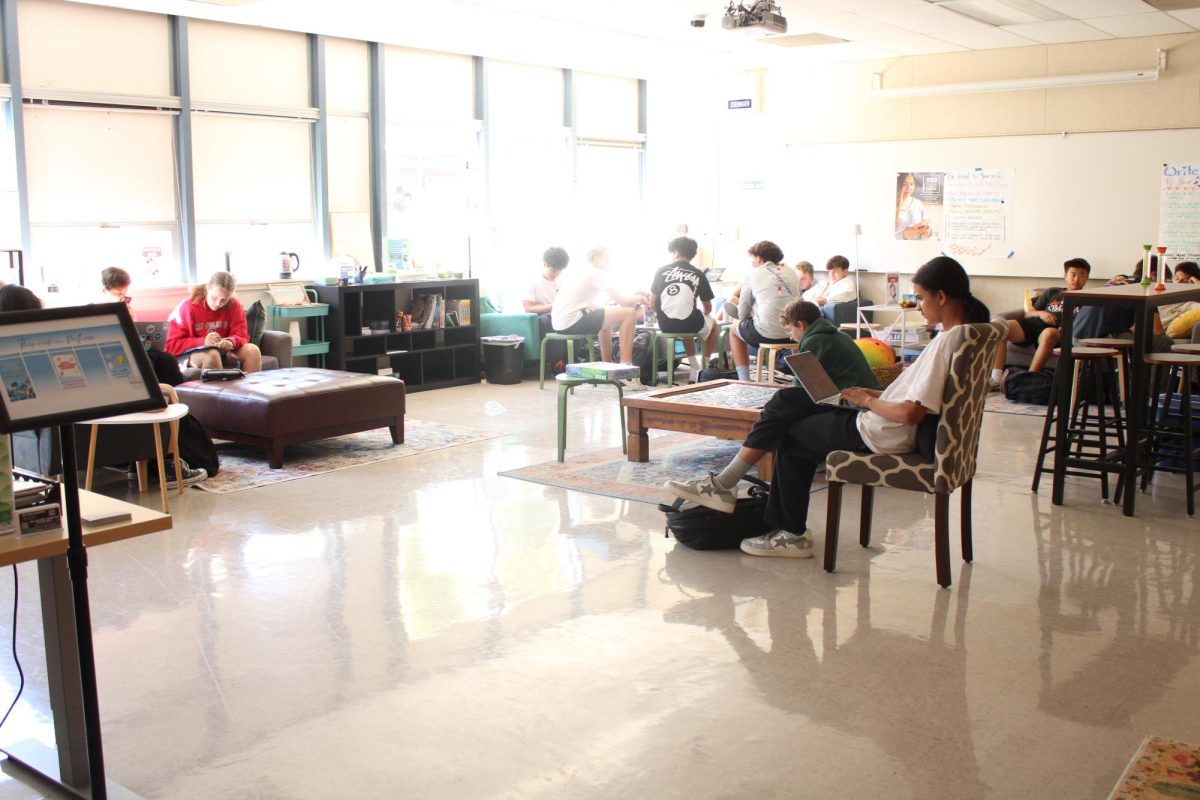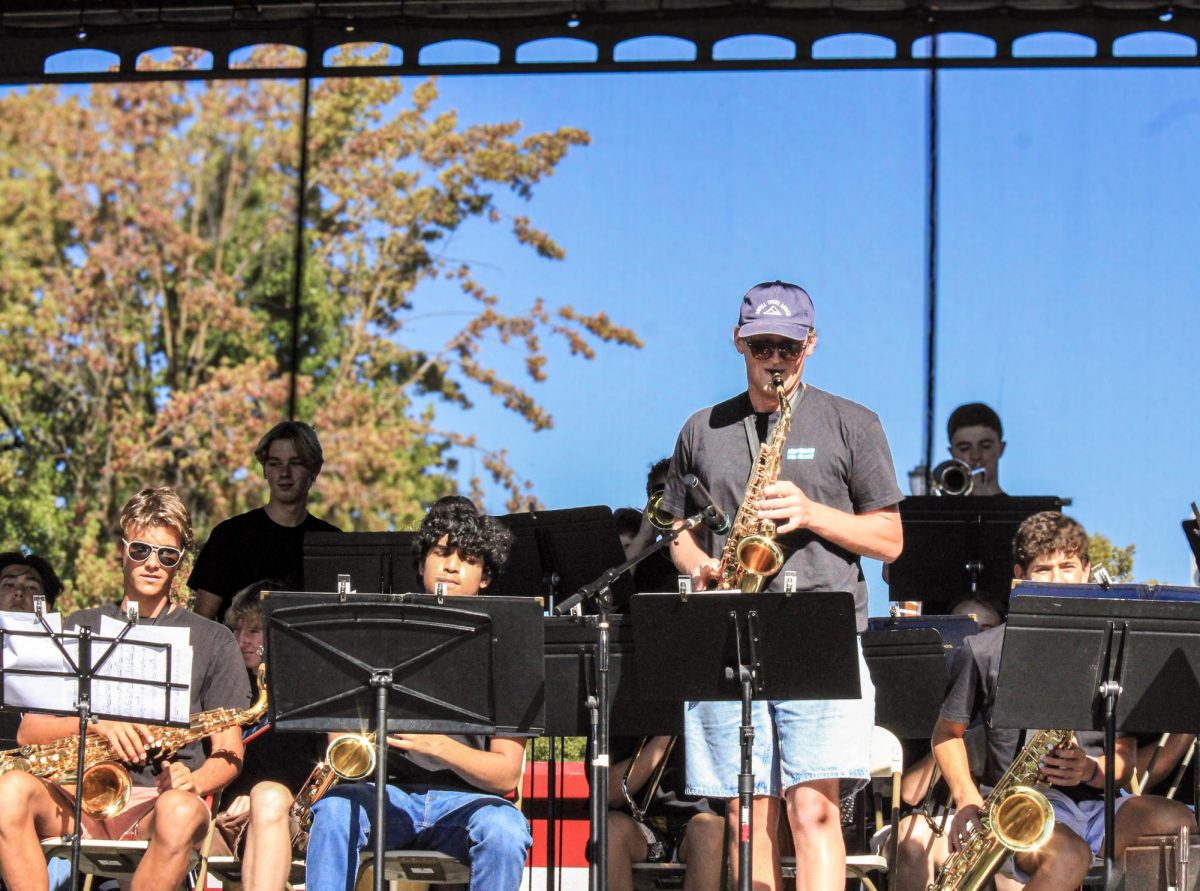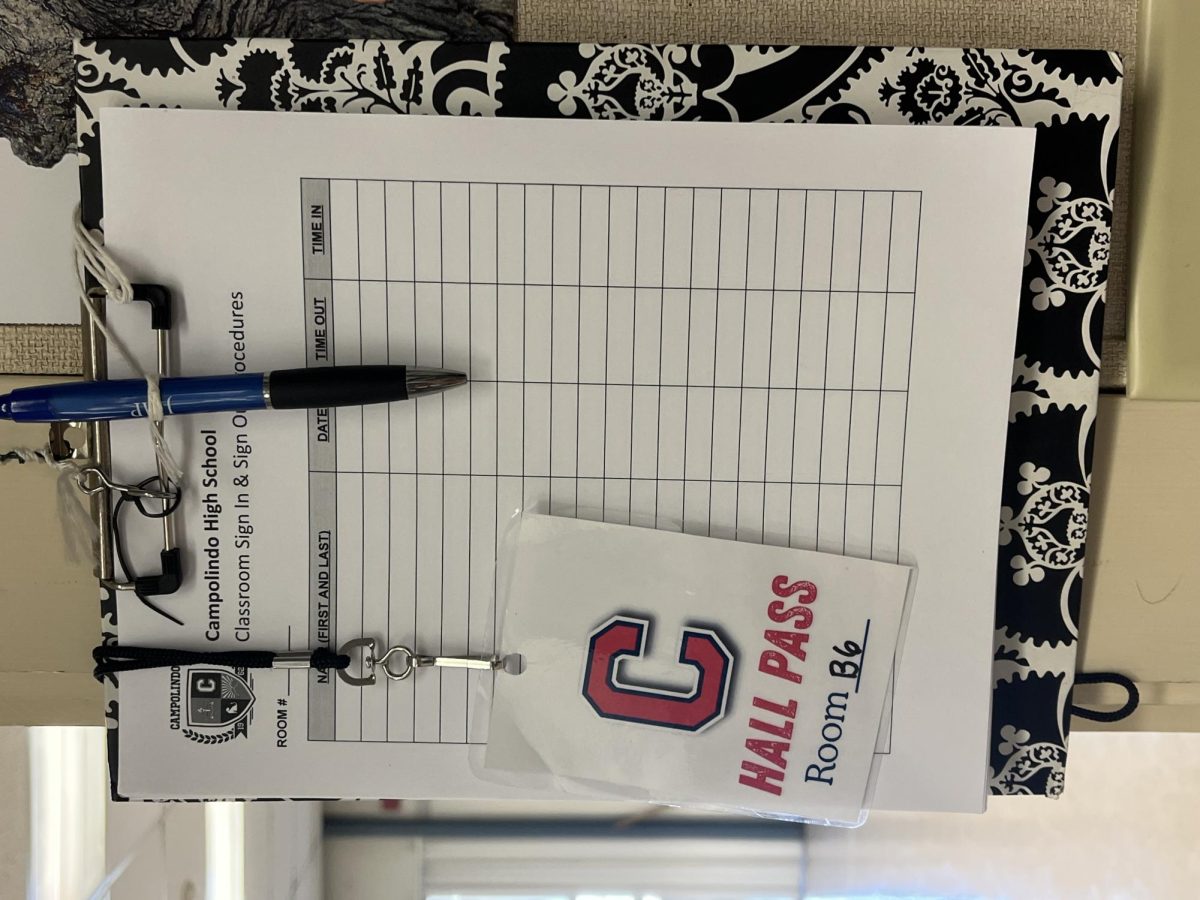The use of advanced technology, like iPads and laptops, has been increasing at schools across the country, including at Campolindo.
English 2 and 3 teacher Tom Duffy has students use iPads and Netbooks to create digital portfolios, graphic novels, and video performances.
“The big year-long project is the creation of digital portfolios using the iPads and the Netbooks,” Duffy said. “Students will create and publish e-books which are a collection of the writing they will do throughout the course. These books can be read on personal iPads, Kindles, smartphones, or other digital devices.”
To make these e-books, Duffy’s students use an application called “Creative Book Builder” and a program called “ePubBud.”
“We also use the iPads for our final project of the year, which is a film that groups produce based on literary characters we have encountered in the reading,” Duffy said.
The graphic novels are “chapters based on quotes and comments from literature,” according to Duffy. They are made using an application called “Comic Life.” Duffy said the students find the iPads “engaging.”
Teacher Ryan Boyd’s Psychology, U.S. History, and Economics classes frequently use iPads for research and to prepare for debates or discussion. According to sophomore Psychology student Julia Winter, her class sometimes uses the iPads as often as 3 times a week.
Boyd believes the iPads are a good way for students to learn. “It’s more dynamic than the textbook,” Boyd said.
However, Winter is not so excited. “It seems like it’s more work to figure out how to use it than it is helpful,” Winter said.
According to vice principal Sharon Bartlett, the 2 AP Psychology classes share an iPad cart. According to junior Margaret Hunger, her class has used the iPads 3 or 4 times this year to do activities such as drawing a map of a brain or completing an online worksheet.
Hunger enjoys using the iPads. She said, “We usually do lecture every day, so it’s more interactive.”
While Hunger said her AP Psychology class has not had any technical issues with the iPads yet, other classes have had problems. “Anytime you use new technology, good things can happen, but frustration is inevitable,” Duffy said. “The students and teachers are at different levels of technological skill so it’s difficult to have even one working at the same rate or level.”
Additionally, the language lab has been improved with technology. According to Spanish teacher Charlotte Taylor, the lab was changed from a hardware based lab to a software based one 2 years ago.
According to Taylor, the new technology had some problems. “We are constantly learning things that the lab can do, and learning what it can’t do,” said Taylor.
When students tried to have an online conversation, the connection often dropped, and the students were “unpaired” from each other. In addition to the software problems, some keys on the keyboards were removed by students and had to be replaced. These issues were fixed over the summer.
In spite of the problems, Taylor still enjoys using the lab for “activities we can do in the lab that we can’t do in the classroom,” such as online conversations and voice recording.
According to Bartlett, the money for the upgrades comes from the district, the Parents’ Club, and MEF. Bartlett said that they were “able to spend more on technology than other schools” outside the district.
According to Miramonte High School’s newspaper, The Mirador, 180 Miramonte freshmen, juniors, and seniors were given iPads this year. Bartlett said that expanding Campolindo’s iPad use to something similar to Miramonte’s was a “topic of discussion,” and that all schools in the district are looking at mobile technology.
“We’ve gone about it a bit differently,” Bartlett said of the iPad usage. Instead of giving iPads to individual students to use, Campolindo has given the iPads to departments for sharing between classes.
According to Bartlett, one thing that is holding Campolindo back from expanding iPad usage was a lack of “infrastructure.” Bartlett said, “Anytime you have a large number of mobile devices, you have to have infrastructure.” It was an “issue of how robust the Wi-fi needs to be to support hundreds of iPads.”
“The big challenge is to find ways to use technology to enhance the teaching and learning,” Duffy said. “The trap to avoid is using technology just because it exists.”





